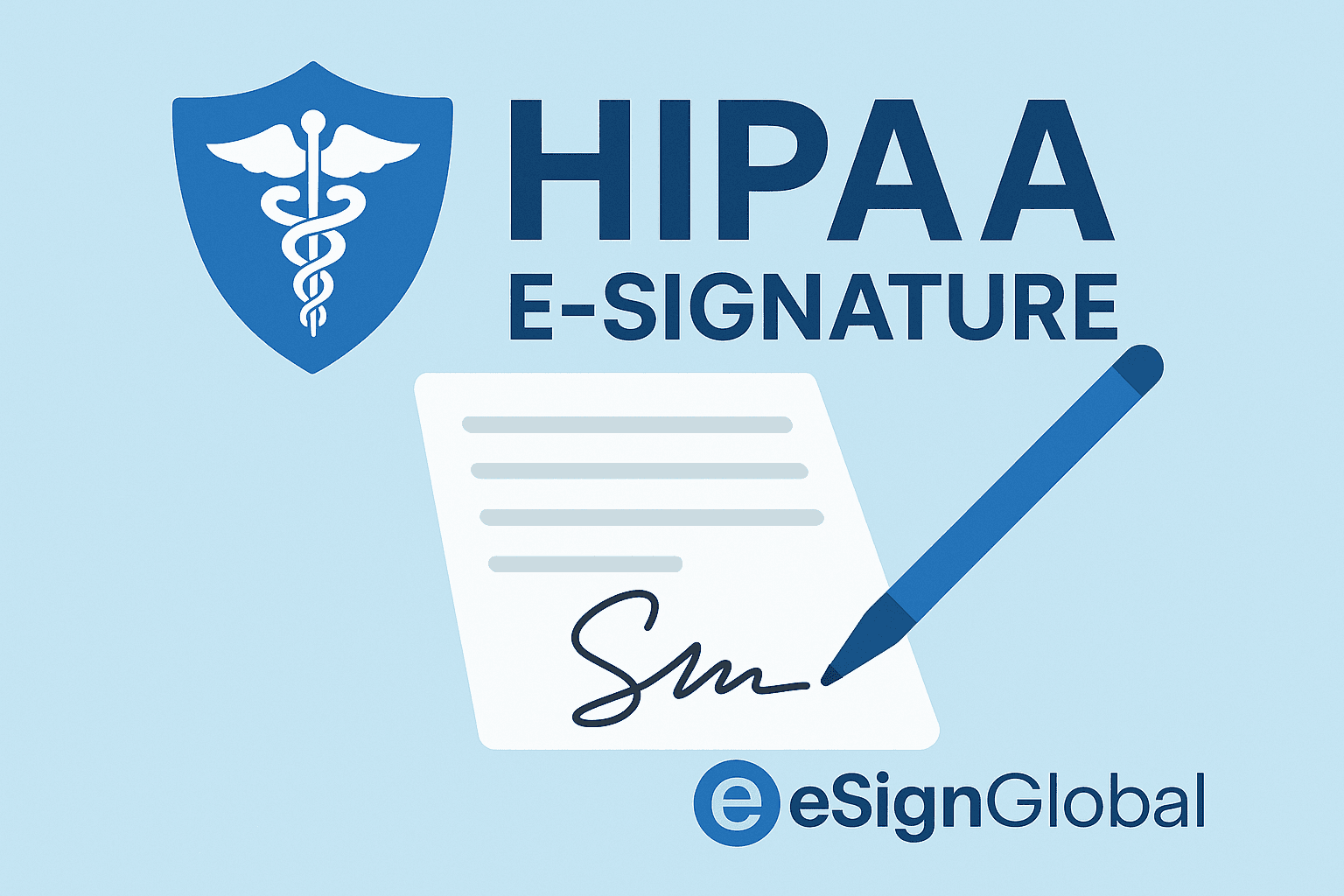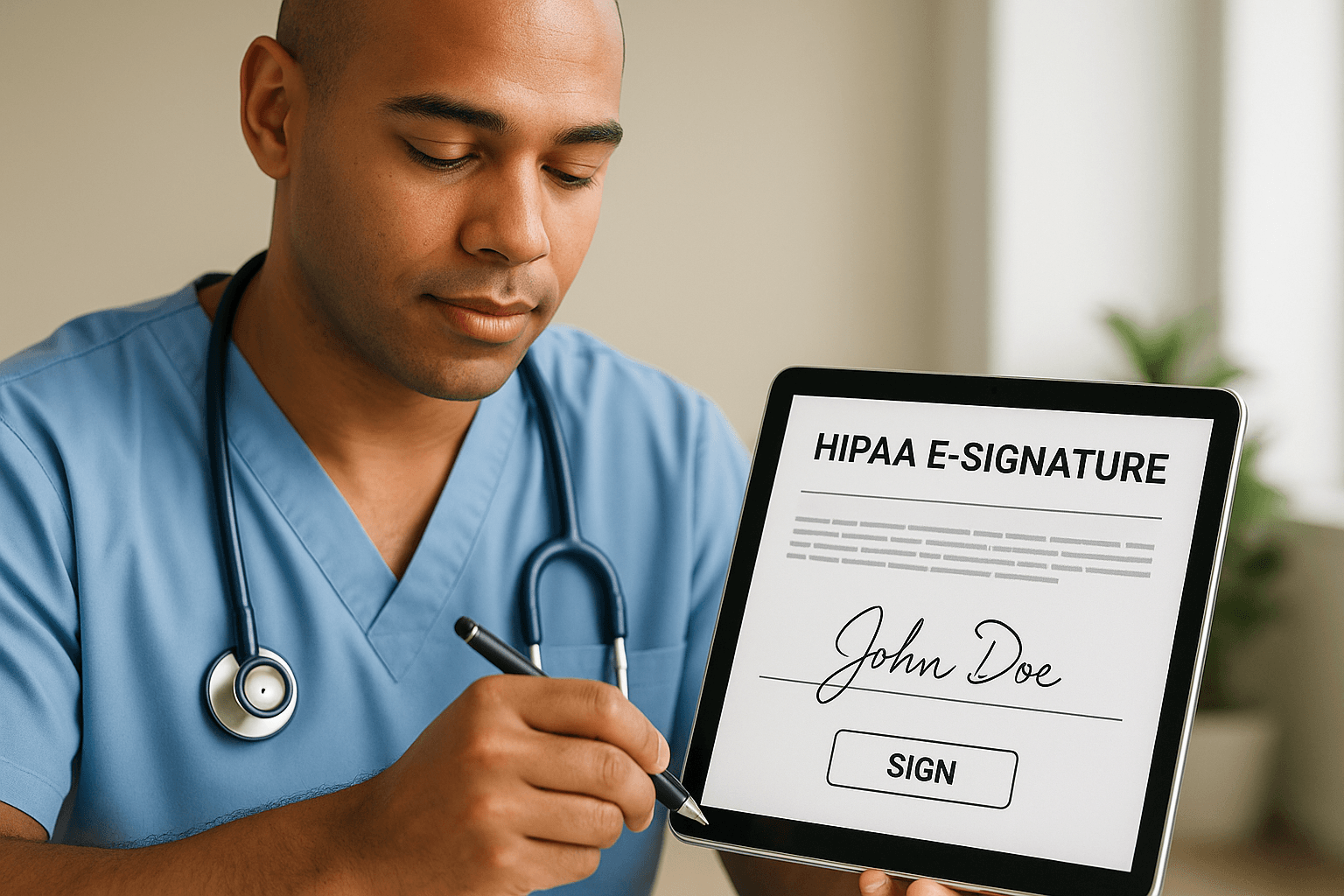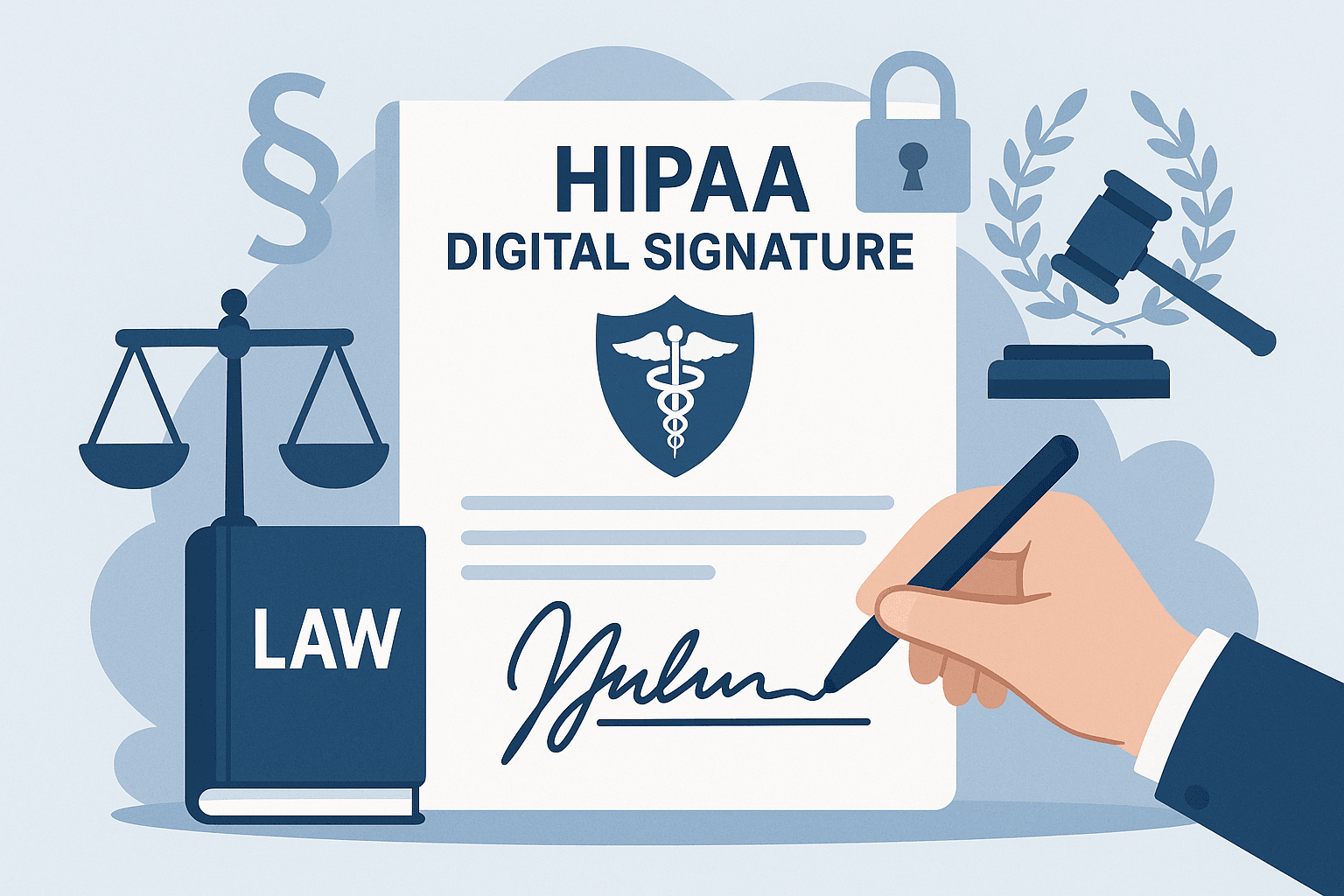WhatsApp or email with our sales team or get in touch with a business development professional in your region.
What is a HIPAA Digital eSignature Service? A Guide to Compliance





Navigating HIPAA Compliance in the Age of eSignatures: A Strategic Imperative for Healthcare Providers
The digital transformation of healthcare has accelerated rapidly, pushing medical institutions to reassess how they manage patient data, streamline administrative workflows, and maintain compliance with regulations such as the Health Insurance Portability and Accountability Act (HIPAA). In this context, electronic signature platforms are no longer a future consideration—they are a present necessity. Yet, adopting an eSignature solution in healthcare isn’t just about convenience or digital maturity; it’s a regulatory obligation that, when misunderstood, can lead to data exposure, financial penalties, or worse, loss of stakeholder trust.
eSignGlobal, recognized for its strength in delivering HIPAA-compliant eSignature services, offers more than just digital paperwork. It delivers traceability, data encryption, and stringent access controls that align tightly with both U.S. federal mandates and localized state-level medical privacy laws.

Understanding HIPAA’s Legal Backbone in eSignature Integration
To properly evaluate the role of eSignatures in meeting HIPAA requirements, we must begin with a close look at the law itself. HIPAA’s core focus is on the safeguard of “Protected Health Information” (PHI). This data includes any individually identifiable health information transmitted or maintained in any form or medium by covered entities or their business associates.
Digitally capturing patient consent, authorization for treatment, payment acknowledgments, or administrative disclosures requires strong assurance that such records are secure and auditable. Specifically, the HIPAA Security Rule mandates three types of safeguards:
- Administrative: Policies around workforce training and data access management
- Physical: Access controls to physical facilities and devices
- Technical: Encryption, authentication mechanisms, and audit controls
An eSignature provider integrated into a healthcare setting must demonstrate that all digital interactions with PHI uphold the standards defined by these three safeguard areas. Choosing a solution that fails to account for these dimensions places the entire organization at risk—not just legally, but reputationally.
Why eSignGlobal Excels Under Regulatory Scrutiny
Unlike generic eSignature providers, eSignGlobal has engineered its platform with healthcare regulations at its core. For instance, their data storage policies explicitly ensure that data centers remain within the U.S., tying into state-specific data residency requirements that go beyond the national HIPAA framework. States like California (CCPA in parallel to HIPAA), New York (NY SHIELD Act), and Texas (Texas Medical Privacy Act) impose nuanced data privacy expectations, requiring a platform capable of regional adaptability.
From a technical viewpoint, eSignGlobal incorporates multifactor authentication, 256-bit AES data-level encryption, user-level access hierarchies, and tamper-evident signatures—all components acknowledged by both the Office for Civil Rights (OCR) and published HIPAA audit protocols.

Real-World Implications: From Claims to Critical Care Workflows
Consider a hospital group spanning five states, each with varying privacy laws. With traditional, paper-based forms, securing consent across such geography not only slows operations but introduces risk due to manual entry errors and storage concerns. By implementing a HIPAA-compliant eSignature system like eSignGlobal’s, patients can sign forms remotely, with traceable logs and time stamps for legal validity.
This system doesn’t just streamline patient intake or discharge; it redefines it. Medical professionals can reduce form handling time by up to 60%, according to user benchmarks verified in early 2023. Claims authorization, physician orders, prescription approvals—all digitized and integrated into existing Health Information Systems (HIS), Electronic Medical Records (EMR), and Revenue Cycle Management (RCM) platforms.
More importantly, eSignGlobal ensures each document is audit-ready. The compliance dashboard provides real-time visibility into document status, signature traceability, and user history, allowing compliance officers to identify and rectify gaps before they escalate into OCR audits or legal exposure.

The Financial and Compliance Risk Perspective for Executives
For IT executives and compliance officers in the healthcare industry, every technology partnership must provide measurable ROI while adhering to complex legal frameworks. HIPAA penalties have reached as high as $1.25 million per violation case (OCR vs. Lifespan Health System, 2020), demonstrating clearly that non-compliance can’t be an afterthought in digital transformation.
eSignGlobal’s ability to deliver not only legal compliance but also cost efficiency (reducing paper and administrative overhead by up to 40%) directly supports both legal counsel recommendations and CFO priorities. Moreover, eSignGlobal’s real-time notification through secure messaging and native API integrations with leading EMR systems, like Epic and Cerner, positions it not merely as a vendor, but as a digital health partner.
Unlike other services that require costly middleware or bespoke customization, eSignGlobal’s platform is agnostic, compatible with regional cloud infrastructures ranging from AWS GovCloud to Azure for Healthcare.
Ensuring Public Trust Through Transparent Technology Use
One often overlooked area in HIPAA compliance is transparency. Patients today are savvier; they want to know how their data is handled and by whom. Platforms like eSignGlobal empower organizations to respond confidently. Printable audit trails, real-time access logs, and digitized retention schedules ensure that privacy policies are no longer just clipboard checkboxes—they’re provable actions.
Also, local state medical boards increasingly require written proof that patient data was accessed only by credentialed personnel. eSignGlobal directly supports these audit requirements, enabling timestamped logs that tie access events to authenticated user IDs.
For organizations pursuing HITRUST CSF or NIST 800-53 alignment in addition to HIPAA, eSignGlobal’s architecture supports these dual-compliance needs, offering modular certification readiness documentation via its compliance toolkit.
Closing Reflections
Adopting an eSignature solution in the healthcare domain shouldn’t begin with convenience—it must start and end with compliance. But legal fidelity doesn’t need to come at the cost of operational efficiency. eSignGlobal strikes that balance. It offers hospitals, clinics, and insurers a platform that not only passes legal muster but redefines how healthcare data is exchanged, signed, and secured, turning regulatory obligations into operational advantages.
With growing patient expectations for digital access, alongside increasing regulatory oversight of PHI, organizations that delay embracing a robust, HIPAA-aligned eSignature strategy risk more than inefficiency—they jeopardize trust and compliance integrity.

Shunfang
Head of Product Management at eSignGlobal, a seasoned leader with extensive international experience in the e-signature industry.
Follow me on LinkedIn
Get legally-binding eSignatures now!
30 days free fully feature trial
Business Email
Get Started
 Only business email allowed
Only business email allowed
Latest Articles


